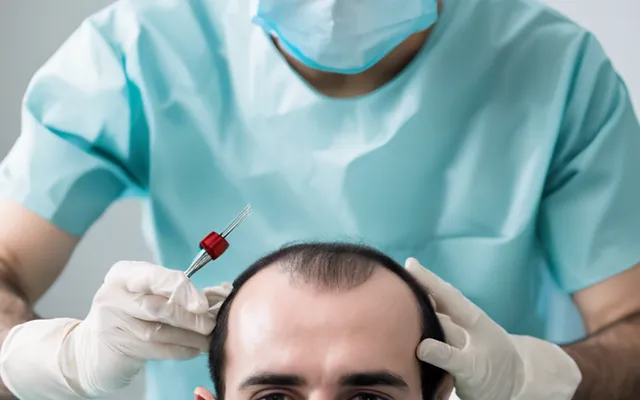
In recent years, the convergence of artificial intelligence (AI) and big data has begun transforming industries far beyond just tech and finance. One of the most promising frontiers of this revolution is in the field of personalized healthcare, particularly hair restoration. As millions worldwide struggle with hair loss, innovations driven by AI and data analytics are reshaping traditional treatment protocols, bringing forth a new era of customization, precision, and effectiveness. The integration of these technologies is not only enhancing the diagnosis process but also improving the overall treatment outcomes, leading to more satisfied patients and streamlined clinical practices. The benefits are particularly noticeable in high-demand treatments, where questions like prp hair treatment cost often arise — now with more transparency and predictability thanks to tech.
Understanding Hair Loss in the Digital Age
Hair loss is a multifaceted condition that can stem from genetic predispositions, environmental stressors, hormonal imbalances, or even autoimmune issues. Traditional hair restoration techniques, though effective in some cases, often adopt a one-size-fits-all approach. However, this generalization overlooks the vast individual variations that can significantly influence treatment success.
Enter big data — the ability to collect, store, and analyze massive amounts of patient data, from genetic markers to lifestyle habits. AI leverages this data to find patterns, correlations, and anomalies that human practitioners might miss. This means that every aspect of a patient’s profile, from their scalp condition to their diet, can be evaluated to create a tailored treatment plan. This level of personalization simply wasn’t possible a decade ago.
The Rise of Predictive Diagnostics
One of the most impactful contributions AI offers to hair restoration is in predictive diagnostics. By analyzing historical data from thousands of successful (and unsuccessful) treatments, AI models can predict with high accuracy how a patient is likely to respond to specific therapies. Machine learning algorithms can factor in variables such as age, genetics, stress levels, hormone profiles, and even previous medical history to foresee possible treatment outcomes.
This not only helps physicians recommend the most effective interventions early on but also reduces trial-and-error approaches that can waste time and money. Patients benefit by receiving solutions that are not just suitable for their condition, but also for their unique biological and lifestyle context.
AI-Powered Treatment Planning
Once the diagnosis is complete, AI takes on another crucial role in planning the actual treatment. Sophisticated algorithms can simulate hair growth patterns, calculate follicular unit density, and design optimal graft distribution maps for procedures like Follicular Unit Extraction (FUE) or Direct Hair Implantation (DHI). These systems rely heavily on data from past procedures and current patient scans to ensure the restoration appears as natural and full as possible.
Moreover, AI tools can monitor the scalp’s condition in real-time using advanced imaging technologies. This allows for dynamic adjustments in treatment, whether it's shifting to a more aggressive PRP therapy, integrating laser stimulation, or altering medication doses. The result is a responsive treatment plan that evolves as the patient's condition changes, something that static plans simply cannot offer.
Big Data and Clinical Research
The application of big data extends beyond individual patient care and into broader clinical research. With massive data pools collected from digital consultations, wearable health devices, and follow-up analytics, researchers can uncover new insights into hair loss and restoration efficacy. These datasets help refine existing treatments, discover new therapeutic targets, and even pave the way for predictive population health models.
For example, patterns might emerge showing that patients with certain genetic markers respond better to specific supplements or PRP protocols. Such findings, made possible only through large-scale data analysis, accelerate the development of more refined and inclusive treatment guidelines.
Additionally, AI can assist researchers in automating literature reviews, scanning global studies and clinical trials to identify relevant findings in seconds. This not only speeds up the R&D cycle but also ensures that patients receive the latest evidence-based treatments.
Ethical Use and Patient Empowerment
With the integration of AI and big data into such a personal realm as hair restoration, ethical considerations become paramount. Transparency in how patient data is collected, stored, and used must be maintained. Fortunately, many new platforms prioritize secure, HIPAA-compliant data infrastructures that give patients control over their information.
What’s more, digital tools now allow patients to take a more active role in their treatment journeys. AI chatbots provide real-time guidance, while apps track hair growth progress and offer suggestions based on AI-generated reports. These tools foster a sense of ownership and understanding, turning patients into partners rather than passive recipients of care.
The democratization of information through AI also means patients can get accurate cost estimates, side-by-side comparisons of treatment efficacy, and expected timelines — all based on people just like them. This transparency builds trust and makes the entire experience less stressful and more results-focused.
The Future of Personalized Hair Restoration
Looking ahead, the integration of AI and big data in hair restoration is only set to deepen. As data continues to grow and algorithms become more refined, treatments will likely become even more precise, cost-effective, and accessible. Innovations like AI-driven robotic surgery, genomics-guided medication, and fully virtual consultation pipelines are already on the horizon.
We can also expect a surge in at-home diagnostic tools that feed data directly into cloud-based AI platforms. These will enable users to receive ongoing assessments and recommendations without stepping foot in a clinic. While human expertise will always remain essential, the synergy between doctor and machine will be what truly redefines the future of hair care.
AI and big data are not just buzzwords in the beauty and health industries—they are the catalysts of a paradigm shift. For those seeking hair restoration solutions, this means access to more intelligent, data-informed, and ultimately successful paths to recovery. As these technologies evolve, they promise to make personalized care not just a premium option, but a standard one.
Comments on “The Role of AI and Big Data in Personalized Hair Restoration”